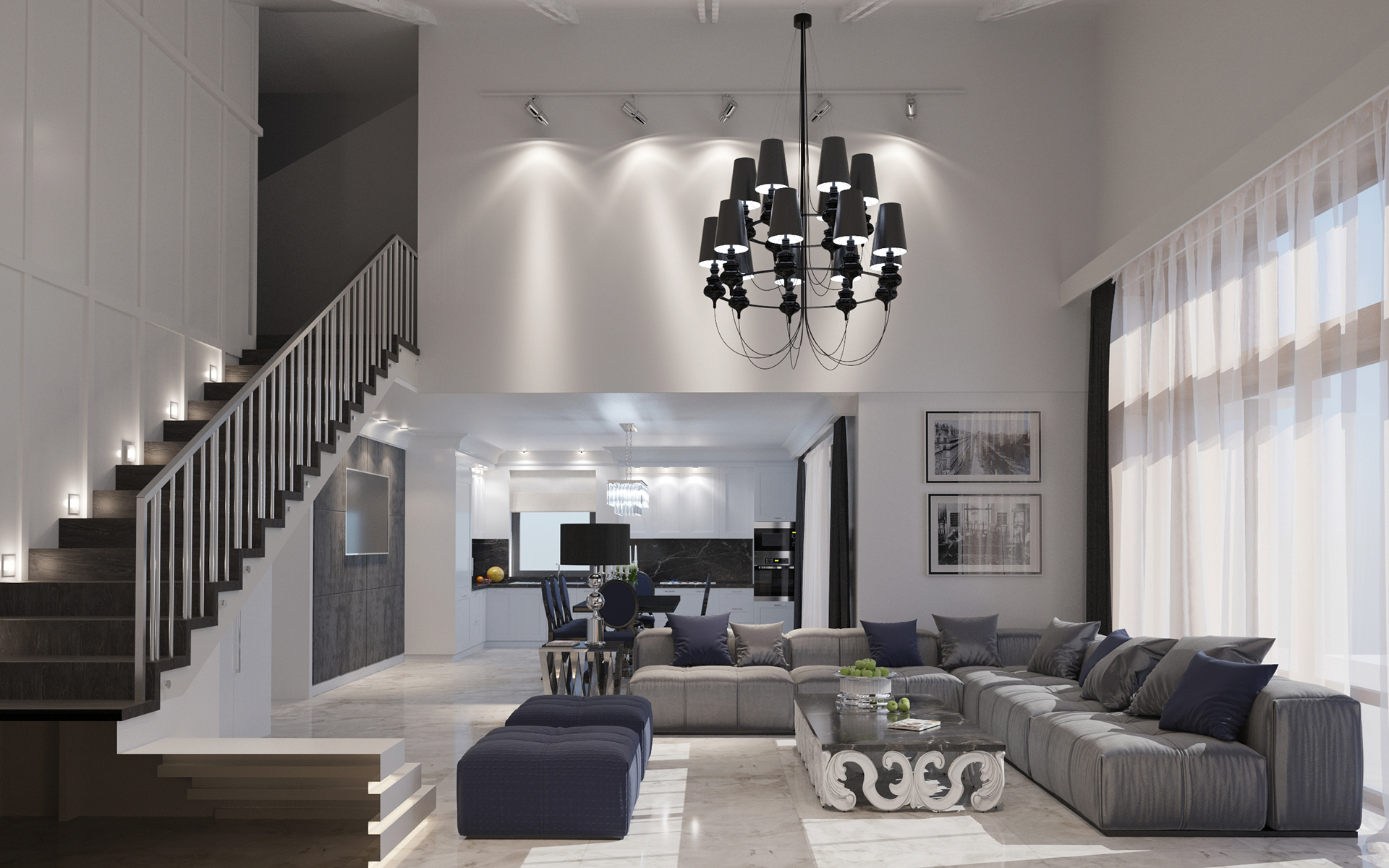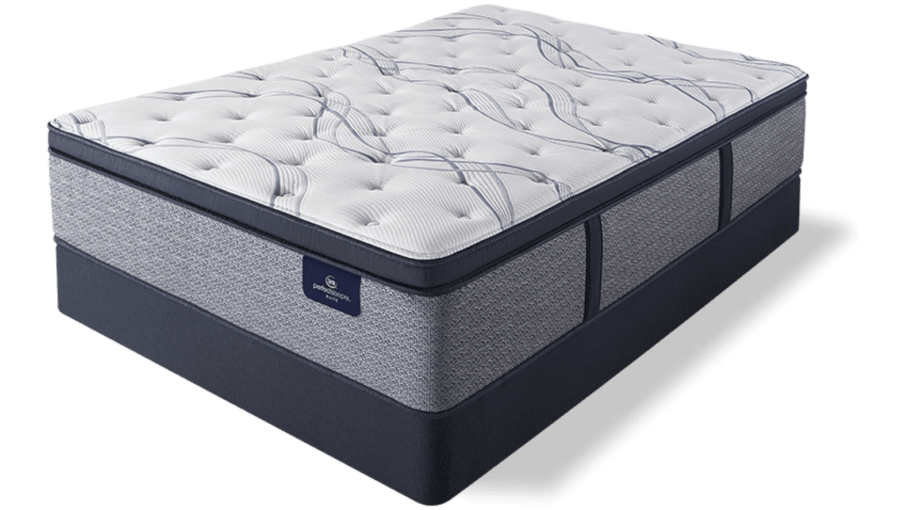Passive solar house designs have been growing in popularity as a sustainable, environmentally-friendly home design. A passive solar house design consists of structures, such as windows, walls, and floors, that are designed to collect, store, and distribute solar energy. This type of design works best for homes that are located in areas with lots of sunshine and requires little additional energy to heat and cool the home. This type of house design is ideal for those looking for a more energy efficient home that still offers comfort and style. Passive solar house designs use materials that are designed to absorb, store, and distribute heat from the sun. Windows are strategically placed on the walls and south-facing windows are designed to trap and store the sun's rays during the winter months. Thick walls are designed to provide insulation and store heat, while also blocking out the cold during the winter months. In the summer months, windows can be designed to allow in natural cooling while also blocking out the heat. One of the biggest advantages of using passive solar house designs is that they don't require the use of additional energy sources such as air conditioners which can have large running costs. In addition, these designs often use materials that are not only eco friendly but also have low impacts on the environment. This makes passive solar house designs a great choice for those looking for a sustainable and energy-efficient home design.Passive Solar House Designs
Zero energy house designs are becoming increasingly popular for those looking to investing in sustainable home design. A zero energy house design consists of structures, such as windows, walls, and floors, that are designed to not only collect, store, and distribute solar energy but also generate energy. In a zero energy house design, the building is designed to generate more energy than it consumes. Zero energy house designs are typically designed to take advantage of the sun's energy in order to produce power. Solar panels are often used to collect and convert sunlight into electricity and thermal solar panels are used to collect and store the sun's heat. In addition, the home may utilize various methods of energy conservation such as window insulation and energy efficient appliances. Investing in a zero energy house design can help you save money over the long term by reducing your home's energy bills. In addition, these types of homes are often designed to use renewable energy sources, such as wind or solar energy. This can help reduce your home's carbon footprint and help contribute to a healthier environment.Zero Energy House Designs
Net zero house designs have been growing in popularity as a way to reduce a home's environmental impact. A net zero house design consists of structures, such as windows, walls, and floors, that are designed to produce energy equal to or greater than the amount of energy consumed. In addition, these types of home design also incorporate energy conservation practices such as efficient insulation, energy-efficient appliances, and energy-reducing building materials. Net zero house designs typically make use of renewable energy sources, such as solar panels, wind turbines, and geothermal heat pumps. These structures are designed to generate enough energy to power the home and eliminate the need for traditional electricity sources. In addition, the home may make use of energy-reducing materials such as low-VOC paints and recycled building materials. Investing in a net zero house design can help reduce energy costs over the long term. In addition, these types of homes are often designed to minimise their environmental impact and help reduce your home's carbon footprint. By investing in a net zero design, you can help contribute to a healthier environment and reduce your home's impact on the environment.Net Zero House Designs
Green home designs are becoming increasingly popular as a way of reducing a home's environmental impact. Green home designs make use of green building materials and techniques that are designed to reduce the home's energy consumption and reduce its environmental impact. Green home designs typically use materials such as efficient insulation materials, recycled building materials, and renewable energy sources. Green designs also typically incorporate features such as energy-efficient technologies, such as solar panels, wind turbines, or geothermal heat pumps. These features work to reduce the home's energy consumption and help to reduce your home's carbon footprint. In addition, green home designs often use water-conservation techniques such as efficient plumbing fixtures and rainwater collection systems. Investing in a green home design can help reduce energy costs over the long term. In addition, green home designs are often designed to reduce a home's environmental impact and help contribute to a healthier environment. By investing in green home design, you can reduce your home's impact on the environment and help reduce your home's energy bills.Green Home Designs
Modular home designs are becoming increasingly popular as a way to reduce the cost and time of constructing a home. A modular home is a prefabricated structure that is designed to be easily customized and erected on site. Modular homes can be found in a variety of sizes and styles and are designed to be energy efficient and cost effective. Modular homes are typically constructed with a frame and panels that are designed to fit together quickly and easily. They can be customized with a variety of features such as efficient insulation, energy-efficient appliances, and energy-reducing building materials. In addition, modular homes are often designed with features such as open floor plans and flexible spaces that make them more adaptable to the user's needs. Investing in a modular home design can help reduce the time and cost of constructing a home. In addition, these types of homes are often designed to use renewable energy sources, such as solar energy or wind power. This can help reduce your home's carbon footprint and help contribute to a healthier environment.Modular Home Designs
Small house designs have become increasingly popular for those looking for a more efficient and cost-effective way of building a home. Small house designs are designed to maximize the use of a smaller space by eliminating the need for large rooms or multiple levels. In addition, these types of house designs are typically designed to be energy efficient and often incorporate green building materials. Small house designs typically utilize materials such as efficient insulation, energy-efficient appliances, and energy-reducing building materials. In addition, they often incorporate features such as energy-saving technologies, such as solar panels, wind turbines, or geothermal heat pumps. These features work to reduce the home's energy consumption and help to reduce the home's environmental impact. Investing in a small house design can help reduce energy costs over the long term. In addition, small house designs are often designed to provide a comfortable living space while still minimizing the environmental impact. By investing in a small house design, you can reduce your home's energy bills and help contribute to a healthier environment.Small House Designs
Tiny house designs have grown in popularity as a way of creating a living space that is both efficient and cost-effective. Tiny house designs take advantage of limited space by utilizing efficient insulation materials, energy-efficient appliances, and energy-reducing building materials. Tiny house designs are typically designed to maximize the use of a small space by eliminating the need for large living spaces or multiple levels. Tiny house designs often make use of renewable energy sources such as solar panels, wind turbines, and geothermal heat pumps. These features work to reduce the home's energy consumption and help to reduce the home's environmental impacts. In addition, these types of homes are often equipped with features such as efficient plumbing fixtures and energy-efficient lighting to help reduce energy costs. Investing in a tiny house design can help reduce energy costs over the long term. In addition, these types of homes are often designed to minimize their environmental impact and help reduce your home's carbon footprint. By investing in a tiny house design, you can help contribute to a healthier environment and save money on energy bills.Tiny House Designs
Container home designs have become increasingly popular as a way of creating living spaces that are both efficient and cost-effective. Container home designs make use of standard shipping containers as the main structure for a home. These containers are typically modified by adding windows, doors, and insulation to create comfortable living spaces. Container home designs are typically designed to be energy efficient and often incorporate innovative building materials such as recycled wood and efficient insulation materials. In addition, they often make use of renewable energy sources such as solar panels, wind turbines, and geothermal heat pumps. These features work to reduce the home's energy consumption and help to reduce its environmental impacts. Investing in a container home design can help reduce energy costs over the long term. In addition, these types of homes are often designed to minimize their environmental impact and help reduce your home's carbon footprint. By investing in a container home design, you can help contribute to a healthier environment and reduce your home's energy bills.Container Home Designs
Insulated concrete form home designs have become increasingly popular as a way to create living spaces that are both efficient and cost-effective. Insulated concrete form home designs make use of pre-cast concrete forms to provide a structure and insulation for the home. In addition, these forms are designed to provide superior insulation and can help reduce energy costs over the long-term. Insulated concrete form home designs are typically designed to be energy efficient and often incorporate energy-saving building materials such as efficient insulation, energy-efficient appliances, and energy-reducing building materials. In addition, they often make use of renewable energy sources such as solar panels, wind turbines, and geothermal heat pumps. Investing in an insulated concrete form home design can help reduce energy costs over the long term. In addition, these types of homes are often designed to minimize their environmental impact and help reduce your home's carbon footprint. By investing in an insulated concrete form home design, you can help contribute to a healthier environment and reduce your home's energy bills.Insulated Concrete Form Home Designs
Fabric home designs have become increasingly popular as a way to create living spaces that are both efficient and cost-effective. Fabric home designs make use of flexible cloth or canvas walls to provide a light and airy living space. These fabric walls are typically designed to be energy efficient and often incorporate energy-saving building materials, such as energy-efficient appliances and energy-reducing building materials. In addition, fabric home designs often make use of renewable energy sources such as solar panels, wind turbines, and geothermal heat pumps. These features work to reduce the home's energy consumption and help to reduce its environmental impacts. The fabric walls are also designed to provide superior insulation for the living space and help to reduce energy costs. Investing in a fabric home design can help reduce energy costs over the long term. In addition, these types of homes are often designed to minimize their environmental impact and help reduce your home's carbon footprint. By investing in a fabric home design, you can help contribute to a healthier environment and reduce your home's energy bills.Fabric Home Designs
Optimal Use of Space When Designing an Efficient Home
 Making the most out of the space in your home while accentsing functionality is a crucial element when creating a
cost effective and efficient house design
. Homeowners can design an efficient home with larger living spaces in mind, but also make sure the home design includes practical floor plans that allows for efficient use of plumbing, electrical, and heating within the home as well.
Making the most out of the space in your home while accentsing functionality is a crucial element when creating a
cost effective and efficient house design
. Homeowners can design an efficient home with larger living spaces in mind, but also make sure the home design includes practical floor plans that allows for efficient use of plumbing, electrical, and heating within the home as well.
Maximizing Available Space
 When designing an efficient household, space is essential. Homeowners should consider how the allocated space is going to be used. Think beyond traditional furniture, like a sectional couch in the living room or a lap desk for use in the bedroom. Homeowners should explore what type of gadgets can be added to their home as well such as a sectional chair that doubles as a storage space or a kitchen counter designed with space for baking equipment.
When designing an efficient household, space is essential. Homeowners should consider how the allocated space is going to be used. Think beyond traditional furniture, like a sectional couch in the living room or a lap desk for use in the bedroom. Homeowners should explore what type of gadgets can be added to their home as well such as a sectional chair that doubles as a storage space or a kitchen counter designed with space for baking equipment.
Multi Usage Saving Money and Time
 When designing an efficient home, incorporating items with multi-functionality can save time and money. For a living area, an ottoman is an ideal choice for a multi-function item. Not only can it be used for seating, but it can also be used as a storage area for books or components that can be replaced when needed. A Murphy bed is another example of a great multi usage piece. It not only saves space when the bed is up, but can also be used to provide additional space for activities when the bed is tucked away.Finding multi-functional furniture and household items that allows for efficient use of space is an important part of designing a cost efficient and efficient house design.
When designing an efficient home, incorporating items with multi-functionality can save time and money. For a living area, an ottoman is an ideal choice for a multi-function item. Not only can it be used for seating, but it can also be used as a storage area for books or components that can be replaced when needed. A Murphy bed is another example of a great multi usage piece. It not only saves space when the bed is up, but can also be used to provide additional space for activities when the bed is tucked away.Finding multi-functional furniture and household items that allows for efficient use of space is an important part of designing a cost efficient and efficient house design.
Focus on Lighting
 Lighting is another important factor for efficient home design. Incorporating natural light when possible is an excellent way to save money on energy costs. Adding windows or skylights to bedrooms, bathrooms, or living areas can create a brighter atmosphere within the home. If utilizing artificial light, consider installing LED lighting throughout the home. LED lights provide less heat and brighter lighting than standard bulbs, saving energy costs and lasting a longer time.
Lighting is another important factor for efficient home design. Incorporating natural light when possible is an excellent way to save money on energy costs. Adding windows or skylights to bedrooms, bathrooms, or living areas can create a brighter atmosphere within the home. If utilizing artificial light, consider installing LED lighting throughout the home. LED lights provide less heat and brighter lighting than standard bulbs, saving energy costs and lasting a longer time.
Cost Effective Appliances
 In addition to a home design, homeowners should consider adding efficient appliances to the home. Energy star rated appliances are ideal additions for a cost effective and efficient home. These appliances not only reduce energy costs and provide an efficient household, but they also provide more convenience for the homeowner. Installing models with smart features that allow for remote operation or automatic settings can save time and energy all around.
Creating an efficient and cost effective house design requires consideration of plenty of factors. Homeowners should focus on incorporating multi-functional furniture and efficient appliances, maximizing available space, and utilize natural and artificial lighting for a complete efficient design. With careful planning, homeowners can create an efficient home design that fits their needs and budget.
In addition to a home design, homeowners should consider adding efficient appliances to the home. Energy star rated appliances are ideal additions for a cost effective and efficient home. These appliances not only reduce energy costs and provide an efficient household, but they also provide more convenience for the homeowner. Installing models with smart features that allow for remote operation or automatic settings can save time and energy all around.
Creating an efficient and cost effective house design requires consideration of plenty of factors. Homeowners should focus on incorporating multi-functional furniture and efficient appliances, maximizing available space, and utilize natural and artificial lighting for a complete efficient design. With careful planning, homeowners can create an efficient home design that fits their needs and budget.


























































































































